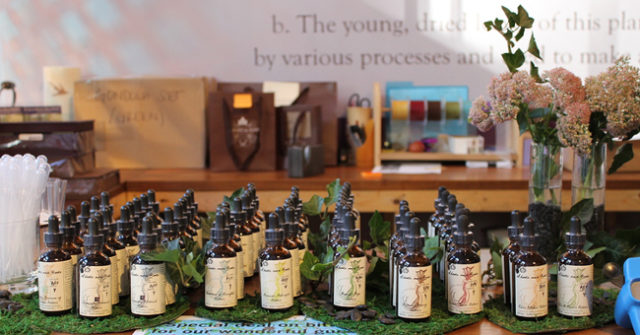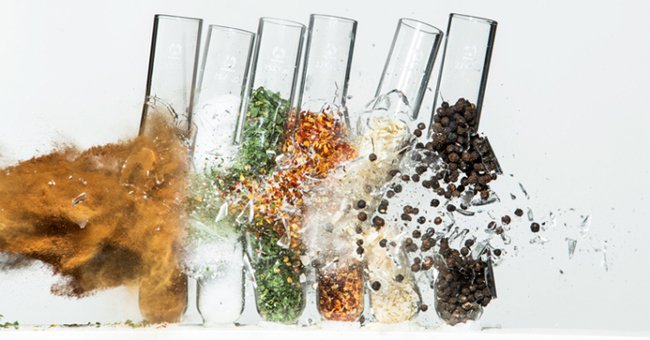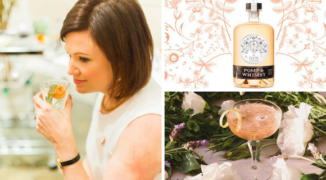The human tongue can detect over five hundred bitter-tasting compounds. But looking at an average cocktail menu in a mainstream bar, one could be forgiven for thinking it’s closer to five. Despite the recent interest in producing unusual bitters, most new products are still iterations of a few familiar flavors: citrus, fruit, chocolate, chili pepper, maybe the occasional unusual herb. Things start to feel predictable.
It doesn’t have to be this way. Perhaps the most intriguing addition to the rising bitters tide comes from botanists Rachel Meyer, Ashley DuVal and Selena Ahmed. Their company, Shoots & Roots Bitters, offers nine blends using native plants from specific regions, delicately balanced tinctures equally suited to mixology and wellness.
Research at the New York Botanical Garden, where each scientist was participating in a different project, brought the three together. They bonded over shared interests and a passion for accessible science, which they see as key to introducing the public to their crucial biodiversity work. “Scientists have an obligation to do outreach,” says Meyer. “This was a way we could team up and do it in a really fun, hands-on way.”
After a successful Kickstarter launched the company, they discovered no one does better outreach than bartenders. “They’re excellent missionaries for plant science,” DuVal shares. “You tell them about the plants, and they have a captive audience across the bar.” Like scientists, the best mixologists have inquisitive minds and are knowledge-driven in their work. Stories about plants captivate customers already excited to learn the story behind a carefully crafted drink. And it turns out many bartenders are secret nerds: more than one has eagerly shown off a DNA tattoo or proudly shared that they majored in biology.
As ethnobotanists, the team is also out to broaden expectations and experiences for customers. Shoots & Roots bitters are technically herbal supplements, so in addition to complementing spirits, they offer the folk remedy-like benefits of using native plants from a specific place. “Thinking regionally allows us to present intact flora,” says DuVal. “We focus on the relationship between ecology and location.”
 Shoots and Roots produces nine types of bitters with ingredients from Andean maca to Masala chai.
Shoots and Roots produces nine types of bitters with ingredients from Andean maca to Masala chai.
Because of their traditional origins, Shoots & Roots bitters can be used as a tonic dropped into soda water or a morning shake, too. Jamaican and Trinidadian juice cafes in the Harlem neighborhood the company calls home offer similar concoctions and served as inspiration for some of the blends. Meyer sees non-alcoholic usages as outreach work: “The bitters market has expanded, so the uses of bitters should expand, too. [Integrating] these plants into people’s lifestyles can be really beneficial.”rn
The most validating responses come from immigrants who taste home when they sample. “We offer people nostalgia,” says Meyer. “It’s amazing to see people’s eyes light up when they taste something so familiar.” A Tibetan couple who tried goji berry bitters said the tincture tickled the back of their throats – an effect that folk knowledge says only quality berries can deliver. Filipino and Japanese customers tell DuVal that blends from those regions “taste like something their mom used to make them drink.”
Getting back to these literal roots of bitters and cocktails aligns well with current trends toward health-conscious drinking. One of Meyers’ friends recently opened a juice bar in Manhattan’s Financial District that offers juice cocktails during Happy Hour, and she also points to mixology bar Mace as the sort of place where it’s easy to order “a pretty damn healthy drink, healthier than most people’s morning smoothie.”
Shoots & Roots currently works closely with two bars in Manhattan: Gramercy Tavern, whose head bartender Erik Lovendahl uses Summers in Bangkok bitters to highlight corn whiskey and aquavit in his Norseman cocktail; and Japanese fusion restaurant Zuma, whose bartenders create unusual shochu drinks with Japanese Arboreal bitters. Looking toward their second year, the team wants to deepen these sorts of collaborations. As botanists they boast nearly unparalleled access to unusual plants worldwide, making them an ideal resource for mixologists seeking new flavors. They know where to source plants that are organically grown and, just as importantly, ethically harvested. “We would like to do more to focus on different parts of the world that are not well-represented in cocktail culture,” adds Meyer.
Perhaps the most exciting aspect of botanically focused bitters is the as-yet-undiscovered benefits of the plants Shoots & Roots uses. While typical supplements claim outlandish results, these scientists require researched verification before promoting the virtues of their product. Right now, a botany professor is studying a dozen tree sap samples the Shoots & Roots team has gathered for purported anti-cancer properties. Tree sap, incidentally, has also grown in popularity as a cocktail ingredient.
Catering research to bartenders’ own exploration makes the relationship symbiotic; it’s a mixology version of an ecosystem. Meyer and DuVal see this as the future of Shoots & Roots. If a collaborator wants to use a plant with certain properties, or investigate a favorite ingredient, Shoots & Roots can facilitate it. “We can then send those results back to bartenders, who can share that knowledge with their customers,” says Meyer. “It’s almost like cocktail-driven science!”





